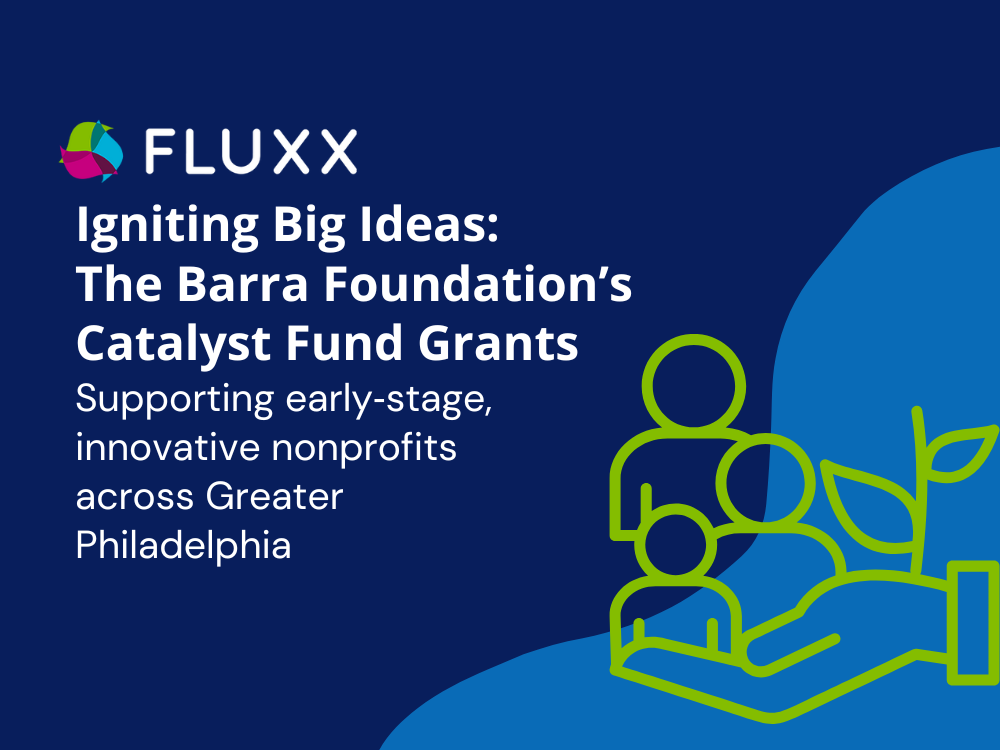Reviewing Bank of America Charitable Foundation Growth
Discover how The Bank of America Charitable Foundation has grown into one of the largest corporate foundations in America, funding programs that...
Be the first to know about new Fluxx grants management resources, blog articles and podcasts.


While the field is prone to obsession with established models, what is tried, what is proven, safe, the Barra Foundation is willing to gamble, to experiment, to innovate. Its essence is the Catalyst Fund, an occasional grant program that supports early concepts with transformative power, particularly among underattended to people of Greater Philadelphia.
For social entrepreneurs and nonprofits that want not only support, but license to test, iterate, and test the limits, the Catalyst Fund presents a unique opportunity. Here, this blog unravels what the fund is, who is eligible, how to apply, and advice for preparing a strong application.
The Catalyst Fund is the main grantmaking tool for Barra. It invests in early capital to nonprofits and initiatives that want to pilot new approaches, provoke assumptions, and bring about system change. Instead of investing in incremental change, Barra aims to invest in ideas that can change a field, a region, or a system.
Though the Catalyst Fund is the prime program for Barra, the foundation also sponsors “Special Grants” collaboratively with other funders for emergency or collaborative projects. But for it, the prime attraction is still the Catalyst.
Barra frames the business around four main areas of interest:
Projects can blur lines among these areas. The point is that they operate with underserved communities and introduce new models to old problems.
Here is what is required to be known regarding eligibility and extent:
The foundation reviews LOIs (letters of inquiry) rolling, responding approximately within 45 days, and sends full proposals to those LOIs it selects. Decisions usually require four to six months from LOI to final grant award.
Your first step is submitting a Letter of Inquiry via Barra’s online portal. In that LOI, Barra expects you to:
Barra will endeavor to process LOIs early and advise accordingly whether to proceed with a full application.
In the event your LOI is accepted, Barra will ask for a full proposal. It likely contains:
Barra can also arrange to talk to or meet with someone at this point, personally, telephonically, or online.
Shortlisted proposals are assessed for the Board of Barra (in any of the quarterly rounds: March, June, September, December). On approval, grants are given accordingly.
Since these are grants that are experimental, the assumption is that grantees will iterate, adapt, and bring up learnings. Reporting will involve narrative reflection, financials, and data aligned to milestones.
Beyond Catalyst, Special Grants are budgeted at the Walker Foundation for responsive grants to deal with emergencies or joint initiatives. These are also typically invitation-only, not open to the general rhetorical landscape.
Venture Capital & Innovation: Numerous funders do not venture to try things out due to the adverse nature of failure. The Catalyst Fund is specifically designed to ingest risk. Barra invests that can potentially fail but that, if successful, can shift systems.
Product-Based Focus: Through focusing investments in the Greater Philadelphia region, Barra can remain close to its grantees, comprehend the contexts profoundly, and facilitate place-specific learning.
Support Beyond Dollars: Barra doesn’t consider itself a transactions-oriented funder. It respects thought partnership, reflection, and learning together. Its strategy invites the grantees to experiment, fail, learn, and share.
Transition to Mission-Based Investment: Barra also undertakes mission-related investing, investing capital (e.g., loans or guarantees) with grantmaking. Some foundations might transition from grant-based pilot initiatives to hybrid approaches correlated with impact investing.
Here are some advice to improve your LOI or whole proposition:
The Barra Foundation’s Catalyst Fund offers an exciting pathway for organizations in Greater Philadelphia ready to step into experimental work by experimenting with ambitious concepts, learning publicly, and working toward system change. When your mission is built upon equity, innovation, and place, this grant might grant you the space to grow and influence.
For an introduction or to refresh criteria, go to the Barra’s Apply page and the Catalyst Fund program page.
Discover how The Bank of America Charitable Foundation has grown into one of the largest corporate foundations in America, funding programs that...
Discover how the San Francisco Foundation’s Rapid Response Fund supports urgent projects addressing racial and economic equity in the Bay Area, with...
Discover how the San Francisco Foundation’s Rapid Response Fund supports urgent projects addressing racial and economic equity in the Bay Area, with...
Be the first to know about new Fluxx grants management resources, blog articles and podcasts.